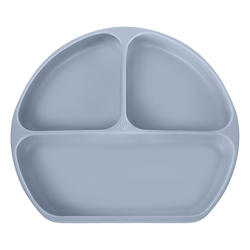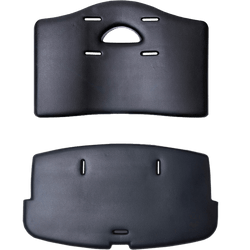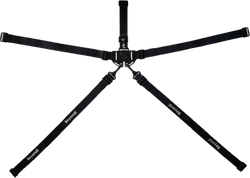Feeding Therapy Tools for Down Syndrome Eating Challenges

Developing an individualised eating plan for a child with Down Syndrome is a unique process for each parent or educator, and there are many different feeding therapy tools and approaches to be considered during this process. It’s important to identify feeding and swallowing issues early and begin treating them as soon as possible for the best outcomes.
Children with Down Syndrome may encounter problems with swallowing or feeding due to medical, physical, or behavioral issues associated with their condition. Every child is different, and no one feeding plan or therapy tool fits all. Let’s explore some at-home options to help you in your feeding therapy journey, with the goal of keeping your child comfortable, safe, and healthy.
Managing Stress and Optimizing Observation
We know that stress makes everything more difficult, especially when it involves feeding challenges and your child, so taking things one step at a time and maintaining a positive attitude and demeanor is critical. Remember to use fun and positive language! This can teach a child that eating is a fun and positive experience while helping keep them as relaxed and happy as possible during the learning process.
Take advantage of your power of observation as a feeding therapy tool! Being attentive to your child’s cues helps you support them where they’re at developmentally in their eating journey. Careful and attentive observation is always good practice. By observing your baby's mouth movements, posture, coordination, breathing, and swallowing when breast and bottle feeding, you can tune into the skills that your child needs to develop. When feeding and swallowing difficulties are suspected, watch for signs such as watering and red eyes, coughing, choking, or chronic respiratory illness.
Set The Table For Success with these at-home Feeding Therapy Tools
Positive Responses to Behavioral Challenges
Some behavioral signs related to eating issues in children with Down syndrome may include an inability to sit at the table, refusal of food, overstuffing the mouth, or unwillingness to try new foods.

Approaches to these behavioral challenges should be positive and encouraging. Listen when they speak, but also listen to non-verbal cues and signals like turning their head away or pushing an eating utensil away, which may suggest they need a break. Trust is a crucial feeding therapy tool, so be attentive, don’t rush them, and allow them to feel respected by respecting their body language.
Promoting Routine
Promoting a routine and having a designated space for eating and developing feeding skills can be helpful for Down syndrome eating challenges. A consistent eating chair in this space, specific eating utensils and dishes, and even consistent, reusable accessories like silicon bibs can all contribute to making eating a routine activity where your child is comfortable and aware of what to expect.
Consistently modeling your own eating skills can also be an extremely helpful feeding therapy tool. Eat your meal with the child, and at their eye level, to let them watch your eating skills up close.
Posture and Stability
Poor posture or stability can sometimes be one of the culprits behind a child’s ability to feed themselves effectively and can lead to unsafe eating. To improve feeding posture, a child can be held in a stable, upright position, or some small, temporary changes can be made to the child’s high chair. Try placing rolled towels on either side of a child’s bottom while they sit in their high chair to help enforce a more upright and secure seating position. This approach works well with Abiie’s Beyond Junior® Y High Chair, and its specially-designed backrests and cushions improve your child’s comfort while seated for mealtime.
Exploration as a Feeding Therapy Tool
Making mealtimes and mealtime preparation fun, engaging, and even personalized by the child can help improve sensory and behavioral struggles around feeding. Try allowing your child to play a role in choosing foods or ingredients for meals, or help with aspects of food preparation through touch, smell, and taste. These experiences can help to improve the sensory experience with food and feeding.

Playing with food during a meal can also provide your child with an opportunity to explore their senses and build positive sensory behaviors and emotions around eating and food. When incorporating a new food or texture into mealtime, allowing a child time to play with the food on their tray can help them accept the texture and make a smooth transition to eating it.
Abiie’s plastic replacement tray cover allows for easy dishwasher cleaning of one tray while another is in use, allowing for optimal mealtime play time. Playing with food is messy! Our high chair seat cushions are water-resistant so you can quickly and easily wipe up any messes throughout or after mealtime.
The Goal: A Safe and Enjoyable Meal
Feeding challenges look different for different children, so it makes sense that their solutions will be unique as well. Many additional feeding therapy tools exist outside the home and there are various professional supports available to be explored by parents and caregivers.
If any of Abiie’s high-quality products are a part of your child’s Down syndrome feeding and eating therapy experience, rest assured that they meet the highest standards of safety and contain no harmful substances, such as BPA, phthalate, and PVC. With Abiie’s safety assured products as a part of your journey, all of your attention can be on you and your child’s exciting learning experience together.
 Canada
Canada
 Japan
Japan
 Taiwan
Taiwan
 European Union
European Union






